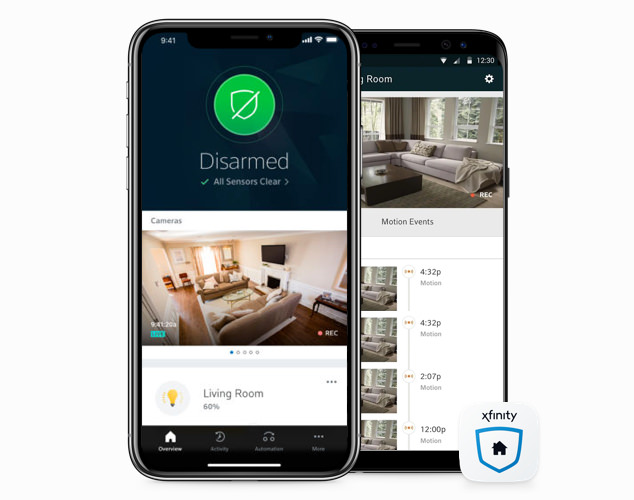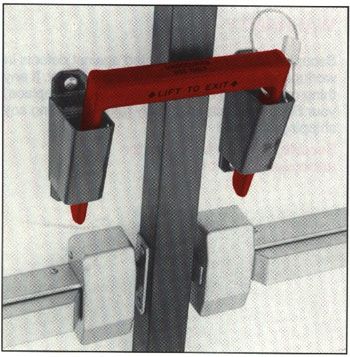
Schlage Encode deadbolts are some of the most advanced on the marketplace. It has built-in Wi-Fi, which allows you to control your door remotely, and manage up to 100 guest access codes. It also has a touchscreen with a fingerprint-resistant and capacitive surface for easy one-touch locking.
Wi-Fi-enabled deadbolt
Schlage's WiFi-enabled deadbols come in a pair with Schlage Home to enable guest access codes to be created. It can store up to 100 codes, and the fingerprint-resistant touchscreen enables one-touch locking and unlocking.

The Schlage Encode Smart WLAN Deadbolt is designed to connect with your home's Wi-Fi and is compatible most smart home hubs like Apple HomeKit (Amazon Alexa), Google Assistant, and Google HomeKit. The device is compatible with any Z-Wave gadget, such as a smartTV. It can also remotely be controlled using Bluetooth. It is not compatible with Zigbee hubs.
Lacks two-factor authentication
Schlage Encode lacks two-factor authentication, which is one of its biggest problems. This feature is missing from the device, so you will need to use an additional app to enable it. It can also have connectivity issues and not enough bandwidth. This can be solved by unplugging your Schlage Encode then reconnecting it.
You will need to update the Schlage Encode App to make sure it is connected to your network. It might be connected to the wrong WiFi channel. You should place it close to your router if this happens.
Lacks dual data encryption
The Schlage Encode Plus smart lock claims to use dual data encryption (up to 128-bit AES). This should protect against unauthorized access. However, the smart lock's app lacks two-factor authentication, which alerts you if someone tries to access your account. Wyze Lock is another smart lock with 2-factor authentication. However, this feature can only be used if you have an app installed.

Lacks fingerprint sensor
Lacking a touchscreen or accessories, invisible locks are wireless and operate with a fingerprint sensor. You can control them using your mobile phone, tablet or voice recognition. These locks can also be unlocked via Bluetooth or Wi-Fi waves. This makes them a good choice if landlords are concerned about security.
FAQ
Do motion sensors come with alarms?
These motion sensor alarms have been around for decades and have gained popularity because of the increasing number of thefts and break-ins. These devices can be too costly and do not work well inside cabinets. If you are looking to protect your home from potential intruders, a motion sensor alarm system might be worth considering.
What is the difference in surveillance and security cameras?
Surveillance cameras can be used for surveillance purposes while security cameras can be used for protection.
Both types of cameras have their advantages and disadvantages. They capture different types of images. Surveillance cameras record video in slow motion, so you can watch what's happening in real time. Security cameras on the other side only record video and still photographs, which are saved for later review.
Alarm monitoring: How much should I spend?
Alarm monitoring prices vary depending on how frequently you need it monitored and what type of equipment is needed. Also, consider whether you are looking to pay an all-inclusive fee or just one monthly charge.
What is the highest-rated home security system rating?
ADT Pulse is the most widely used home security system.
What Home Security Systems are Unhackable?
The definition of hacking is key to the answer. Hacking is the unauthorized access to computer systems, networks, and data. Most home security systems cannot be hacked because they do not contain software that allows someone else to control them remotely. They don't permit anyone to enter your home without your permission.
If they are connected to an internet connection, however, certain home security systems may be compromised. These systems often require a password to be activated. This means that anyone can hack them if they know the right password.
Which home security company is best?
The best home security monitoring company is ADT. ADT provides 24/7 monitoring services at an affordable rate. They offer 24/7 monitoring service and respond in minutes.
ADT also offers an iOS and Android app. You can now check the status of your home from anywhere, at any time.
Statistics
- (In my experience, the discount on my home insurance covered about 25 percent of the subscription of an average plan, but your mileage may vary depending on your location and the size of your home.) (theverge.com)
- Most home security companies will charge you around 75% of the remaining term of your contract if you cancel early—and some require 100%.Related questionsWhat type of contract length can I expect from security providers?Home security system cancellation (safewise.com)
- Most home security companies will charge you around 75% of the remaining term of your contract if you cancel early—and some require 100%.Related questionsWhat type of contract length can I expect from security providers?Home security system cancellation (safewise.com)
- Depending on your insurance, 24/7 professional monitoring may qualify you for as much as 15% off your premium. (safewise.com)
External Links
How To
How to Install a Home Security System
A home alarm system is a device which monitors your home and alerts when there's an activity. It could be a motion detector, doorbell camera or smoke detector. A home security system is usually composed of one or several sensors (e.g. motion detectors), that send signals when there's movement or sound. The signals are then sent over to a control box where they are monitored and recorded. If there's a problem such as someone breaking into your house or other suspicious activity, the control panel sends an alert via your phone, tablet computer, voice assistant, or computer. The control panel will notify you immediately so that you can take corrective action.
The first step to installing a home security system is choosing the right type of sensors for your home. There are two main types, passive and active. Passive sensors don't require batteries; they just pick up sounds and vibrations from their surroundings. They can be doorbells or sirens as well as buzzers. Active sensors use electricity for data transmission. Some examples of this kind of sensor are cameras and motion sensors.
There are many different brands of sensors available today. Each brand has its own pros and disadvantages. For instance, some sensors can be weatherproof while others don't. Some have built-in speakers that allow you to hear them outside. Others work only inside. Some are simple, while others offer advanced features such as night vision.
Once you have chosen the right type of sensor for your property, it is time to select a manufacturer. This will make sure that your sensors function well together. There should be many options at your local hardware store.
Once you have decided on a brand to use, it is time to decide on how many you want. Most people start with one or two sensors, depending on whether they live alone or with family members. You might want to buy more sensors if you intend on adding them later.
Next, you'll need to figure out where you want to place your sensors. Do you want them close to doors or windows? Or are you happy to keep them hidden? Before placing them around your property, you should get permission. It is important to ensure they do not interfere with electrical outlets.
Now that you know where you want to put your sensors, you'll need a way to connect them to your control panel. Depending on your setup, you may need to purchase a power adapter or battery pack. Once everything is in place, you can start to monitor your property.